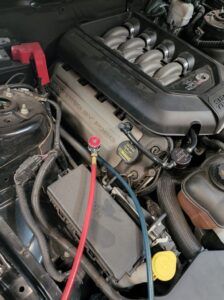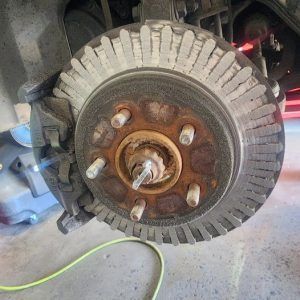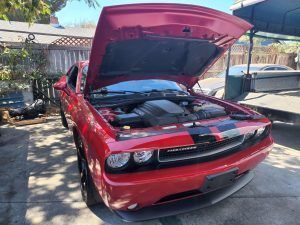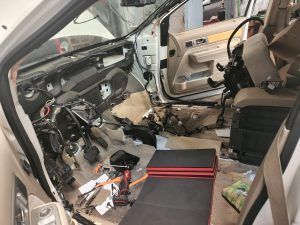Auto Issues: Solutions For The Most Common Auto Repairs
Are you tired of dealing with auto issues that seem to pop up out of nowhere? Don’t worry, you’re not alone. Many car owners face the frustration of engine troubles, brake issues, electrical malfunctions, and tire maintenance problems.
But fear not, because in this article, we will provide you with solutions for the most common auto repairs. Whether you’re dealing with a misfiring engine, squeaky brakes, a faulty electrical system, or worn-out tires, we’ve got you covered. With our technical expertise and precise instructions, you’ll be able to address these issues head-on and get your car back on the road in no time.
By following our detailed advice and implementing preventive maintenance measures, you can ensure that your vehicle stays in top shape for years to come. So let’s dive in and tackle those auto issues once and for all!
Key Takeaways
– Engine troubles, such as overheating and misfires, can often be caused by issues with the cooling system, thermostat, or ignition system.
– Brake issues can be identified by squealing or grinding noises, vibrating brake pedal, or longer stopping distance. Regularly inspecting and replacing brake components is important for optimal performance, and safe driving habits can help prevent brake issues.
– Electrical malfunctions in cars can be caused by various factors, including a faulty battery, blown fuse, loose or corroded connections, faulty alternator, or damaged wiring. Troubleshooting techniques can help identify and fix electrical issues.
– Proper tire maintenance is crucial for safe and efficient driving. This includes regular tire rotation to ensure even wear and prolong tire lifespan, as well as maintaining proper tire pressure for fuel efficiency and handling.
Engine Troubles
Having engine troubles? We’ve got the solutions for you! When it comes to common auto repairs, engine issues can be a major headache. Two of the most common problems drivers face are engine overheating and engine misfires.
Engine overheating can be caused by a variety of factors, such as a malfunctioning cooling system or a faulty thermostat. To address this issue, start by checking the coolant levels and ensuring there are no leaks. If the coolant levels are low, top them off and monitor the temperature gauge. If the problem persists, it may be necessary to replace the thermostat or have the cooling system inspected by a professional.
Another common engine problem is misfires, which can result in a rough running engine or even a complete loss of power. Misfires are often caused by issues with the ignition system, such as worn spark plugs or faulty ignition coils. To fix this, start by inspecting and replacing the spark plugs if necessary. If the problem continues, it may be necessary to replace the ignition coils or have the ignition system checked by a mechanic.
Now, let’s move on to brake issues and how to address them without compromising your safety on the road.
Brake Issues
To prevent brake issues, it’s important for you to understand the signs of brake problems. Look out for symptoms such as squealing or grinding noises, a vibrating brake pedal, or a longer stopping distance.
Additionally, regularly inspect and replace brake components to ensure optimal performance. Check the brake pads, rotors, and calipers for wear and tear, and replace them if necessary.
Lastly, practice safe driving habits, such as avoiding sudden stops or hard braking, to minimize the risk of brake issues.
Understand the Signs of Brake Problems
When you experience a pulsating sensation or hear a squealing noise while braking, it’s crucial that you promptly address these signs of brake problems. Ignoring them can lead to further damage and compromise your safety on the road.
To troubleshoot the most common brake issues, follow these steps:
1. Check for worn brake pads: Inspect the thickness of the brake pads. If they’re less than 1/4 inch thick, it’s time to replace them.
2. Examine the brake rotors: Look for signs of warping or grooves on the rotors. If you notice any irregularities, they may need resurfacing or replacement.
3. Inspect the brake fluid: Check the brake fluid level and color. If it’s low or appears dirty, it may be time to flush and replace the fluid.
Regularly inspecting and replacing brake components is essential for maintaining optimal brake performance. By addressing brake problems promptly and performing routine maintenance, you can ensure your brakes function effectively and keep you safe on the road.
Regularly Inspect and Replace Brake Components
Make sure you regularly inspect and replace your brake components to ensure your safety on the road and prevent any potential accidents. Brake inspection should be done every 6,000 to 10,000 miles or as recommended by your vehicle’s manufacturer. This involves checking the brake pads, rotors, calipers, and brake lines for any signs of wear or damage. If you notice any of the following red flags during inspection, it’s crucial to replace the affected components immediately: squeaking or grinding noises, reduced braking power, uneven wear on the brake pads, or a soft brake pedal. By addressing these issues promptly, you can prevent further damage to your braking system and maintain optimal performance. Transitioning into the next section about practicing safe driving habits to prevent brake issues, always remember that prevention is key to ensuring your brakes function effectively and reliably.
Practice Safe Driving Habits to Prevent Brake Issues
Remember, driving safely and practicing good habits is the key to keeping your brakes in top-notch condition and enjoying a smooth ride.
To prevent brake issues, here are some safe driving techniques and brake maintenance tips you should follow:
– Maintain a safe following distance: Keep a distance of at least three seconds between you and the car in front of you. This gives you enough time to react and avoids sudden braking.
– Avoid aggressive driving: Rapid acceleration and hard braking put unnecessary stress on your brakes. Gradually accelerate and decelerate instead.
– Brake gently: When coming to a stop, apply firm, but gentle pressure on the brakes. This helps to prevent excessive wear and tear.
By following these safe driving techniques and practicing regular brake maintenance, you can ensure the longevity of your brake components.
Up next, we will discuss electrical malfunctions and how to address them.
Electrical Malfunctions
If you’re experiencing electrical malfunctions in your car, don’t ignore them. Troubleshooting techniques can help you identify and fix common electrical issues before they become major problems.
One of the most common causes of electrical malfunctions is a faulty battery. If your car won’t start or you notice dimming lights, it may be time to replace your battery.
Another common cause is a blown fuse. If certain electrical components stop working, check the fuse box and replace any blown fuses.
Additionally, loose or corroded connections can lead to electrical problems. Regularly inspect and clean the battery terminals and other electrical connections to ensure a secure connection.
Faulty alternators can also cause electrical malfunctions. If your battery keeps dying even after replacing it, it may be a sign of a failing alternator.
Finally, damaged wiring can lead to electrical issues. Look for frayed or exposed wires and have them repaired or replaced as necessary.
By addressing electrical malfunctions promptly and using these troubleshooting techniques, you can prevent more serious damage to your car’s electrical system.
Now, let’s move on to the next section about tire maintenance.
Tire Maintenance
Now that we’ve covered electrical malfunctions, let’s move on to another crucial aspect of auto maintenance: tire maintenance. Taking care of your tires is essential for safe and efficient driving.
Two key factors to consider when it comes to tire maintenance are tire rotation and tire pressure.
Regularly rotating your tires helps ensure even wear and prolongs their lifespan. By moving the tires to different positions on your vehicle, you distribute the wear and tear more evenly. This not only extends the life of your tires but also improves traction and handling.
Maintaining proper tire pressure is equally important. Underinflated or overinflated tires can lead to various problems such as reduced fuel efficiency, poor handling, and increased risk of a blowout. Checking your tire pressure regularly and adjusting it to the manufacturer’s recommended levels will optimize performance and safety.
Tire rotation and maintaining proper tire pressure are essential for maximizing the lifespan of your tires and ensuring safe driving conditions.
Now that we’ve covered tire maintenance, let’s move on to the next section about preventive maintenance, where we’ll discuss additional steps to keep your vehicle running smoothly.
Preventive Maintenance
Taking proactive steps to maintain your vehicle will ensure a smooth and worry-free driving experience. One of the most important aspects of preventive maintenance is conducting regular vehicle inspections.
By inspecting your vehicle regularly, you can identify any potential issues before they become major problems. Start by visually inspecting the exterior of your vehicle, checking for any signs of damage or wear and tear. Next, move on to inspecting the interior, paying close attention to the condition of the seats, dashboard, and controls. Don’t forget to inspect the engine and other mechanical components as well. Look for any leaks, loose belts, or worn-out parts.
Additionally, regularly checking your vehicle’s fluids is crucial for preventive maintenance. Make sure to check the oil, coolant, brake fluid, and transmission fluid levels regularly, and top them up if needed. Remember to follow your vehicle’s manufacturer guidelines for the recommended fluid types and intervals for checking and changing them.
By conducting thorough vehicle inspections and regularly checking your vehicle’s fluids, you can prevent potential issues and keep your vehicle running smoothly for years to come.
Frequently Asked Questions
How often should I replace my car’s spark plugs?
You should replace your car’s spark plugs every 30,000 to 100,000 miles, depending on the type of spark plugs used. Signs of worn spark plugs include misfires, decreased fuel efficiency, and difficulty starting the engine.
What causes a car’s battery to die frequently?
Frequently dying car batteries can result from various causes, such as a faulty alternator, loose or corroded battery connections, or leaving lights on. To maintain a healthy car battery, regularly inspect and clean terminals, ensure proper electrical connections, and avoid draining the battery unnecessarily.
Can I replace my car’s brake pads myself?
Yes, you can replace your car’s brake pads yourself. To do so, you will need car maintenance tools such as a jack, lug wrench, and C-clamp. Follow these brake pad replacement steps for a successful DIY job.
How often should I rotate my tires?
To maintain optimal tire performance and extend their lifespan, it is recommended to rotate your tires every 5,000 to 7,500 miles. Regular tire rotation benefits include even wear, improved traction, and better fuel efficiency.
What are some common signs of a failing alternator?
Some warning signs of a failing alternator include dim headlights, a dead battery, strange noises, and a dashboard warning light. Troubleshooting steps involve checking the battery, inspecting the alternator belt, and testing the alternator’s output.
Conclusion
In conclusion, addressing auto issues requires an understanding of common repairs and the necessary solutions. When facing engine troubles, it’s important to diagnose the issue promptly and seek professional assistance.
Brake issues can be resolved by inspecting the brake system and replacing worn-out components. Electrical malfunctions can be fixed by identifying faulty wiring and replacing damaged parts.
Regular tire maintenance, such as checking tire pressure and tread depth, can prevent potential issues. Lastly, preventive maintenance, including regular oil changes and fluid checks, ensures the longevity and optimal performance of your vehicle.







